- Home
- Introduction, Update Information, Links
- The Super Seventies "Classic 500"
- Readers' Favorite Seventies Albums
- Seventies Single Spotlight
- The Top 100 Seventies Singles
- Favorite Seventies Artists In The News
- Seventies Almanac - Year By Year
- Seventies Singles - Month By Month
- Seventies Albums - Month By Month
- Seventies Daily Music Chronicle
- Seventies Superstars In Their Own Words
- The Super Seventies Archives
- Seventies Trivia Quizzes & Games
- Seventies MIDI Jukebox
- The Super Seventies Bookstore
- The Super Seventies Photo Gallery
- Seventies' Greatest Album Covers
- Popular Seventies Movies & TV
- Seventies Celebrity Portrait Gallery
- Seventies Lyrics Hit Parade
- Top Seventies Artist Music Videos
- Seventies Usenet Music Forums
- Seventies Smiley Calendar
- EXTRA!
- Superseventies.com Facebook Page
- Superseventies.com Reddit Discussions
- The Super Seventies Blog
- Tweet The Seventies
- RockSite InfoBank
- Beatlefan Site
- Thanks For Your Support! / Top Sellers
- Search The Rock Site/ The Web
![]()
On his 20th solo album, Paul McCartney is as romantic -- and benign -- as ever
by Tom Sinclair
in Entertainment Weekly
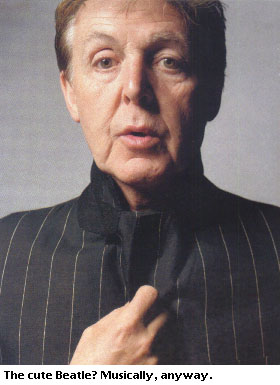
![]() oy, incipient senior citizenhood certainly is turning out differently for Paul McCartney than he -- or we -- once thought. Way back in the Summer of Love, when he was in his mid-20s, the cute Beatle sang a cute ditty called "When I'm 64," which imagined what life might be like at such an imponderably advanced age. "Doing the garden/ Digging the weeds/ Who could ask for more?" he wondered.
oy, incipient senior citizenhood certainly is turning out differently for Paul McCartney than he -- or we -- once thought. Way back in the Summer of Love, when he was in his mid-20s, the cute Beatle sang a cute ditty called "When I'm 64," which imagined what life might be like at such an imponderably advanced age. "Doing the garden/ Digging the weeds/ Who could ask for more?" he wondered.
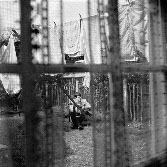 McCartney is now 63. He has just released a new CD, Chaos and Creation in the Backyard.
It's unclear whether that title is some sort of allusion to the above lyrics (garden = backyard -- get it?), but the album itself is clearly modeled after 1970's McCartney,
his first post-Beatles solo effort. As he did on that earlier disc, McCartney plays virtually all the instruments (excluding the strings), overdubbing everything from flügelhorns and harpsichords to drums and synthesizers. Nigel Godrich (Radiohead, Beck) served as producer, but apparently kept any overly arty ideas to himself. The uncluttered sound is classic, immaculate Macca: "Very twee/ Very me," as he sings on the bucolic "English Tea."
McCartney is now 63. He has just released a new CD, Chaos and Creation in the Backyard.
It's unclear whether that title is some sort of allusion to the above lyrics (garden = backyard -- get it?), but the album itself is clearly modeled after 1970's McCartney,
his first post-Beatles solo effort. As he did on that earlier disc, McCartney plays virtually all the instruments (excluding the strings), overdubbing everything from flügelhorns and harpsichords to drums and synthesizers. Nigel Godrich (Radiohead, Beck) served as producer, but apparently kept any overly arty ideas to himself. The uncluttered sound is classic, immaculate Macca: "Very twee/ Very me," as he sings on the bucolic "English Tea."
There's no question that in places, it's a tad too twee. But what we're hearing is an artist honestly following his muse -- always a compelling event. While his peers the Rolling Stones are currently trying to live up to their hoary rep as the (alleged) greatest rock & roll band in the world, our man is quite content to get in touch with his kinder, gentler side, composing quiet little hymns with titles like "A Certain Softness" and "Friends to Go" (the latter is a touching homage to George Harrison, who, tragically, didn't live to see 63). Every once in a while he turns the heat up, as on the bouncy Motown pastiche "Promise to You, Girl," but you're far more likely to play Backyard on a Sunday morning than on a Saturday night.
Naysayers may carp that this is an old man's album; we posit that it's the work of an old soul -- something this Liverpudlian seems always to have been. McCartney has said that two especially introspective tracks, "Jenny Wren" and "English Tea," were partially inspired by his love for Charles Dickens. He also admits that "Too Much Rain" is a sideways rewrite of Charlie Chaplin's chestnut "Smile." We suggest that if you have trouble relating to songs indebted to those two pre-rock & roll Charlies you seek out Run, Devil Run, McCartney's abundantly raucous 1999 set. And if you're misguided enough to think that any song that evokes the mood of "Yesterday" and "Michelle" is pabulum by definition -- well, there's no hope for you.
Personal to Sir Paul: When you actually do turn 64 next June 18, why not release an update of "When I'm 64"? You could call it "Now I'm 64!" and pen some wry new lyrics: "Doing a record/ Digging myself/ Who could ask for more?" It's a once-in-a-lifetime opportunity, mate. Don't sleep on it. A
.
![]()
Hot on the heels of Martin Scorsese's new Dylan documentary,
a guide to the singer's must-haves -- and must-avoids.
by Chris Nashawaty
and Chris Willman
in Entertainment Weekly
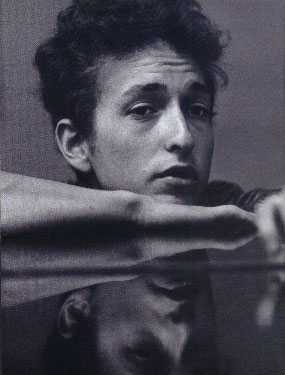
![]() t this year's Telluride Film Festival, only one flick requires a mid-movie break: the world premiere of No Direction Home,
Martin Scorsese's three-and-a-half documentary focusing on the first six world-rattling years of Bob Dylan's career. "You know what movie this reminds me of?" says 48 Hours
screenwriter Larry Gross, accosting author and screening host Greil Marcus during the intermission. " Lawrence of Arabia
! Because he's somebody who's invented himself out of whole cloth. He doesn't simply pass through the age, he enacts
it." Whether No Direction Home
-- which came out on DVD
Sept. 20 and aired on PBS Sept. 26-27 -- belongs alongside David Lean's epic biopic is debatable, but this much is sure: Thanks to the film's stunning archival footage, revealing new interviews, and surprising narrative focus, Dylan fans are ranking Scorsese's Don't Look Back
as one of the great rock movies. Last month proved to be a good month to Dylanites, with a pair of new archival CDs also causing a stir. Released Aug. 30 and sold in Starbucks, Live at the Gaslight 1962
is a snapshot of an early performance. More substantially, a two-disc No Direction Home
soundtrack CD
, which boasts 26 previously unreleased tracks, also came out Aug. 30. The idea of a Dylan doc was first floated 20 years ago, but it wasn't until the late '90s that Dylan manager Jeff Rosen started conducting interviews for the project. When Scorsese signed on in 2001, he inherited a ton of raw footage. "Because Dylan is such a powerful figure," says producer Nigel Sinclair, "we wanted a documentary filmmaker whose power was equal to that. Marty went to the material and found the story." The resulting film is likely to send new fans racing to stock up on Dylan CDs. But what they find in stores -- a baffling catalog four decades in the making -- might prove overwhelming. So before you go, check out our guide to the bard's many incarnations.
t this year's Telluride Film Festival, only one flick requires a mid-movie break: the world premiere of No Direction Home,
Martin Scorsese's three-and-a-half documentary focusing on the first six world-rattling years of Bob Dylan's career. "You know what movie this reminds me of?" says 48 Hours
screenwriter Larry Gross, accosting author and screening host Greil Marcus during the intermission. " Lawrence of Arabia
! Because he's somebody who's invented himself out of whole cloth. He doesn't simply pass through the age, he enacts
it." Whether No Direction Home
-- which came out on DVD
Sept. 20 and aired on PBS Sept. 26-27 -- belongs alongside David Lean's epic biopic is debatable, but this much is sure: Thanks to the film's stunning archival footage, revealing new interviews, and surprising narrative focus, Dylan fans are ranking Scorsese's Don't Look Back
as one of the great rock movies. Last month proved to be a good month to Dylanites, with a pair of new archival CDs also causing a stir. Released Aug. 30 and sold in Starbucks, Live at the Gaslight 1962
is a snapshot of an early performance. More substantially, a two-disc No Direction Home
soundtrack CD
, which boasts 26 previously unreleased tracks, also came out Aug. 30. The idea of a Dylan doc was first floated 20 years ago, but it wasn't until the late '90s that Dylan manager Jeff Rosen started conducting interviews for the project. When Scorsese signed on in 2001, he inherited a ton of raw footage. "Because Dylan is such a powerful figure," says producer Nigel Sinclair, "we wanted a documentary filmmaker whose power was equal to that. Marty went to the material and found the story." The resulting film is likely to send new fans racing to stock up on Dylan CDs. But what they find in stores -- a baffling catalog four decades in the making -- might prove overwhelming. So before you go, check out our guide to the bard's many incarnations.
FOR THE TOTAL BEGINNER
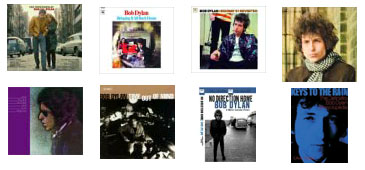 The Freewheelin' Bob Dylan
(1963) This is where it all really starts. On his second album, Dylan goes from Woody Guthrie wannabe to his own man, wise beyond his years. With "Blowin' in the Wind," "A Hard Rain's A-Gonna Fall," and the truth-to-power indictment "Masters of War," he turns protest into poetry.
The Freewheelin' Bob Dylan
(1963) This is where it all really starts. On his second album, Dylan goes from Woody Guthrie wannabe to his own man, wise beyond his years. With "Blowin' in the Wind," "A Hard Rain's A-Gonna Fall," and the truth-to-power indictment "Masters of War," he turns protest into poetry.
Bringing It All Back Home (1965) How fitting that the album where Dylan goes electric also turned him into a lightning rod, inciting the fury of folk purists. From the opening honky-tonk scat of "Subterranean Homesick Blues," Dylan conjures astonishing images and bends words with the might of a circus strongman.
Highway 61 Revisited (1965) This is Dylan at his creative peak -- a time when he seemed to be redefining music every few weeks. Kicking off the monumental "Like a Rolling Stone," the album never lets up. "I'm not going to be able to make a record better than that one," Dylan said later. Well, at least not for nine months...
Blonde on Blonde (1966) For Dylan's third masterpiece in just over a year (this one a two-record set), he packed up his harmonica and headed to Nashville, where he feverishly dashed off surreal lyrics in his hotel room like a mad prophet channeling the divine. "Visions of Johanna" just might be his finest moment.
Blood on the Tracks (1975) Written during the bust-up of his marriage to Sara Lowndes, Blood is what they call turning lemons into lemonade. At turns stung, disgusted, regretful, and relieved, this is the brutal, brilliant kiss-off every heartbroken lover wishes he could dedicate to his ex.
Time Out of Mind (1997) Death-rattle lyrics and a dog-tired growl -- not to mention great songs and spooky production from Daniel Lanois -- make this umpteenth comeback sound like an aging man narrowly outrunning the hellhounds on his tail.
DVD No Direction Home (2005) For a casual fan, hearing that a Dylan documentary is three and a half hours -- and, oh yeah, doesn't cover the last 39 years -- might sound daunting. It isn't. The archival footage is stunning, the assorted talking heads candid and funny. Plus, in extensive new interviews Dylan reinvents himself yet again: as a lucid, non-mumbling, un-cryptic, normal guy!
BOOK Keys to the Rain: The Definitive Bob Dylan Encyclopedia, by Oliver Trager (2004) More Dylan info than you could possibly ever need, which is exactly the right amount. Exhaustively geekish entries on all of Dylan's albums and "more than 700 songs," mercifully served up without the obnoxious, hipper-than-thou 'tude of a vinyl snob.
FOR THE MODERATE FAN
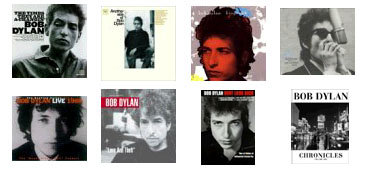 The Times They Are A-Changin'
(1964) It's a veritable Greatest Hits of the Protest Era
that just happens to be a single studio album. The title track, "With God on Our Side," "The Lonesome Death of Hattie Carroll," and others all captured the social zeitgeist in such a career-defining fashion that he still hasn't completely shed the socially-conscious-folkie rep he's spent four decades transcending.
The Times They Are A-Changin'
(1964) It's a veritable Greatest Hits of the Protest Era
that just happens to be a single studio album. The title track, "With God on Our Side," "The Lonesome Death of Hattie Carroll," and others all captured the social zeitgeist in such a career-defining fashion that he still hasn't completely shed the socially-conscious-folkie rep he's spent four decades transcending.
Another Side of Bob Dylan (1964) The other side was this: nasty, emotionally charged, brilliant love songs. Or anti-love songs, mostly, with venom like "Ballad in Plain D" and "It Ain't Me, Babe" -- the latter probably directed as much at his soon-to-be-jettisoned trad-folk compatriots as ex-girlfriend Suze Rotolo.
Biograph (1985) The collection that ignited the boxed-set phenomenon remains a great greatest-hits compilation. But the real reason to check it out is the 17 previously unreleased tracks scattered throughout -- a perfect introduction to the thrills of Dylan's much-obsessed-over treasure trove of outtakes and unused songs.
The Bootleg Series Vols 1-3: 1961-1991 (1997) Once you get a taste on Biograph, dig into this, the musical equivalent of busting into Fort Knox. Previously swapped, smuggled, and sold illegally, these 58 rarities and outtakes from the Dylan vaults are pure gold, especially the impossible rare "Farewell, Argelina."
Live 1966: The "Royal Albert Hall" Concert (1998) This recording from Dylan's infamous 1966 British tour captures the wrath that fans unleashed over his new electric direction. Between songs, an irate crowd member yells out "Judas!" Dylan waits a beat and sneers "I don't believe you!" before launching into a loud and angry version of "Like a Rolling Stone."
"Love and Theft" (2001) Dylan's previous album, Time Out of Mind, was about raging at the dying of the light. This one laughs at the dying of the light, with that same sadness subsumed in a return to his phantasmagorical narratives of the mid-'60s, a lot of Henny Youngmanesque one-liners, and a travelogue through a whole century of American music.
DVD Don't Look Back (1967) Directed by D.A. Pennebaker, this entertaining black-and-white documentary reveals Dylan during his '65 British tour parrying with the press, drifting from earth-mother girlfriend Joan Baez,and generally acting like, well, kind of an egotistical jerk. Especially when fans tell him how much they prefer his "earlier stuff" -- à la Woody Allen in Stardust Memories.
BOOK Chronicles Volume One, by Bob Dylan (2004) Even when Dylan wants to be revealing, he's as cryptic as James Joyce. Hopscotching through the decades in typically nonlinear fashion, the Riddler bestows colorful (sometimes plum loco) anecdotes, name-checking Bertoit Brecht, Run-DMC, and wrestler Curious George. Riveting and confounding.
FOR THE BUDDING DYLANOLOGIST
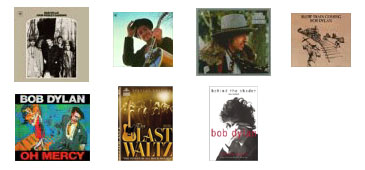 John Wesley Harding
(1967) Dylan goes country! After a two-year hiatus, he returned with these dozen rural-roots yarns, which baffled some fans. (You'd think they would have come to expect the unexpected by this point. Oh well.) Instrumental in kick-starting the whole country-rock movement, Harding
is also famous for "All Along the Watchtower," later covered by you know who.
John Wesley Harding
(1967) Dylan goes country! After a two-year hiatus, he returned with these dozen rural-roots yarns, which baffled some fans. (You'd think they would have come to expect the unexpected by this point. Oh well.) Instrumental in kick-starting the whole country-rock movement, Harding
is also famous for "All Along the Watchtower," later covered by you know who.
Nashville Skyline (1969) Clocking in at a svelte 27 minutes, Skyline is probably best known as the album where Dylan adopted his "Lay Lady Lay" croon (he claimed it was from giving up cigarettes). His duet with Johnny Cash on "Girl From the North Country" feels like a wonderful back-porch lark.
Blood on the Tracks: New York Sessions (Unreleased) Dave Matthews and Fiona Apple weren't the first to have early versions of albums find their way onto bootlegs. After releasing an acetate of his original album to a few radio stations, Dylan rethought the material and rerecorded much of what many consider his finest album with a different band in Minneapolis. But the earlier, emotionally very different, somewhat more subdued tracks survive for enthusiasts who can track them down.
Desire (1976) Dressed on the cover like a gypsy extra from the set of McCabe & Mrs. Miller, Dylan returns to political protest in the opening track, "Hurricane," a controversial plea for imprisoned boxer Rubin Carter. Spiced with Scarlet Rivera's yawning fiddle and Emmylou Harris' honey-twang harmonies, it's one of his best '70s albums.
Slow Train Coming (1979) The bard's conversion to evangelical Christianity resulted in an album that many fans hated to love. The excellence of Jerry Wexler and Barry Beckett's production and Mark Knopfler's guitar playing -- and some of the most passionate singing in the convert's canon -- left even the faithless little choice but to give in.
Oh Mercy (1989) Among many debts owed to New Orleans is thanks for hosting the sessions for this comeback disc, with Dylan doing a much-needed handover of the production reins to Daniel Lanois. After several blustery, fallow '80s discs, a contemplative Dylan ended the decade in a lower key and on a high note.
DVD The Last Waltz (1978) Despite the Band's worthiness as hosts and honorees, Dylan's climactic set steals the show, much as it did from George Harrison in the earlier Concert for Bangladesh. Abetting the thievery: future No Direction Home director Martin Scorsese, who helmed this doc about The Band's final concert.
BOOK Bob Dylan: Behind the Shades, Revisited, by Clinton Heylin (1991) Anthony Scaduto's '70s biography has more firsthand observation from Dylan's early years, and Howard Sounes' 2001 tome has more dirt. But for a combination of narrative focus and critical insight, go with Heylin (whose other compendium, Recording Sessions 1960-1994, is a completist's delight).
FOR THE TOTAL FANATIC
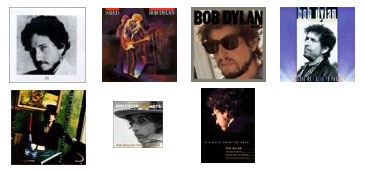 New Morning
(1970) A kissing cousin to John Wesley Harding,
this was the last of the gentle excursions into Americana that Dylan made at the end of the '60s. "Domestic Dylan" may sound contradictory, but it's there in this, one of his few efforts that really seem to reflect a satisfied mind. Just listen to the surprisingly straightforward love song "If Not For You."
New Morning
(1970) A kissing cousin to John Wesley Harding,
this was the last of the gentle excursions into Americana that Dylan made at the end of the '60s. "Domestic Dylan" may sound contradictory, but it's there in this, one of his few efforts that really seem to reflect a satisfied mind. Just listen to the surprisingly straightforward love song "If Not For You."
The Genuine Basement Tapes (Unreleased) An official album came out in 1975, but this five-volume bootleg remains the Holy Grail of Dylanania. Recorded with The Band in their basement, it captures 193 tracks of odds-and-sods Americana that are as weird and wonderful as anything Dylan's done. See also Greil Marcus' book Invisible Republic (1997), which serves as liner notes to the complete bootleg set.
Saved (1980) Dylan's second and final album of all-born-again material soured secularists who'd given him a one-time pass on Slow Train. Seen as a sheer black-gospel genre exercise, though, it's Dylan's finest act of cultural appropriation since he went country. "What Can I Do for You?" features a true rarity: a moving harmonica solo.
Infidels (1983) Some fans were happy his "Christian phase" seemed to be over, while others were displeased that the stridency of the religious material was now finding its way into neo-protest songs like the pro-Israel "Neighborhood Bully." Mark Knopfler's production and support from Mick Taylor and Sly & Robbie ensure there's some muscularity to go with the crankiness. Fans still bemoan how this narrowly missed becoming a classic, with great, later-surfacing outtakes like "Blind Willie McTell" inexplicably missing the cut.
Good as I Been To You / World Gone Wrong (1992/1993) Beset by writer's block in the early '90s, Dylan recorded these two albums of oldies -- pre-Victrola folk oldies, that is -- and his solo acoustic readings of stark murder ballads and lonesome pre-pop blues found his musicality in high gear, even if his muse was on holiday.
Live 1975 (The Bootleg Series Volume 5) (2002) In his most charismatic mode (check out the bizarro white face paint), Dylan opens this rollicking Rolling Thunder Revue show with "Tonight I'll Be Staying Here With You," bellowing the refrain so commandingly, anyone listening would've immediately granted squatter's -- or seducer's -- rights. A mid-set reunion with Joan Baez sweetens the deal.
DVD Eat the Document (Unreleased) D.A. Pennebaker, who directed Don't Look Back, planned to make a straight follow-up film about Dylan's historic '66 European tour; he reportedly wasn't pleased when his subject began co-opting the project with his own surrealist skits. Neither was ABC, which commissioned -- then refused to air -- the doc. Available only as a bootleg, though some of the best footage is reprised in No Direction Home.
BOOK A Simple Twist of Fate: Bob Dylan and the Making of Blood on the Tracks, by Andy Gill and Kevin Odegard (2004) Everything you could want to know about the making of one masterpiece, from the influential breakdown of Dylan's marriage to the understandable bitterness of the musicians who helped define the project but continue to be left off the album credits.
FOR ABSOLUTELY NO ONE
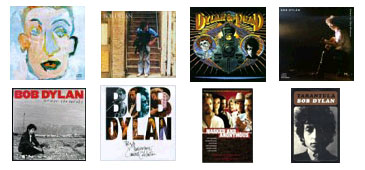 Self Portrait
(1970) "What is this s---?" Greil Marcus famously wondered in Rolling Stone
at the time. Answer: a motley, seemingly random assortment of cutesy curios, covers, and live tracks intended to throw worshippers off the scent of brilliance.
Self Portrait
(1970) "What is this s---?" Greil Marcus famously wondered in Rolling Stone
at the time. Answer: a motley, seemingly random assortment of cutesy curios, covers, and live tracks intended to throw worshippers off the scent of brilliance.
Street Legal (1978) Released just before he found God, this suggests he was profoundly in need of some kind of born-again experience. Cloying female backing vocals fatally sandbag a set of so-so post-divorce material.
Dylan & the Dead (1988) A marriage made in a surprisingly unheavenly place, with each party bringing out the other's sloppy somnambulism. Almost any concert bootleg you could pick up handily beats this (and 1979's At Budokan and 1984's Real Live are almost as lame).
Down in the Groove (1988) Fans debate whether this or 1986's equally undercooked Knocked Out Loaded represents Dylan's studio nadir. Notice we didn't say passionately debate.
Under the Red Sky (1990) Produced by Don and David Was with a musical cast including George Harrison, Slash, Elton, and Stevie Ray Vaughn. What could go wrong? Everything, actually, with Dylan phoning in his weakest batch of material ever, defended by a few stalwarts as "nursery-rhyme-inspired." Mother Goose sued.
The 30th Anniversary Concert Celebration (1993) The most memorable moment of this all-star tribute concert -- Sinead O'Connor getting booed off the stage -- isn't included, though we do get a lot of the respectful classic-rock homage usually reserved for the recently deceased.
DVD Masked and Anonymous (2003) Director Larry Charles was a Seinfeld vet, but it took a Dylan vanity project to really make something about nothing. There are a few funny one-liners in this all-star art-house fiasco, but mostly you long for the more disciplined and purposeful days of his botched 1978 flick, Renaldo & Clara.
BOOK Tarantula
(1971) A random chapter opening from Dylan's sole "novel," better described as an epic poem: "back betty, black bready blam de lam! bloody had a baby blam de lam!" Recently republished, due to no particular blam de-lam-mand.
![]() Reader's Comments
Reader's Comments
No comments so far, be the first to comment .
![]() Best of EXTRA!
| EXTRA!
| Main Page
| Seventies Single Spotlight
| Search The RockSite/The Web
Best of EXTRA!
| EXTRA!
| Main Page
| Seventies Single Spotlight
| Search The RockSite/The Web


